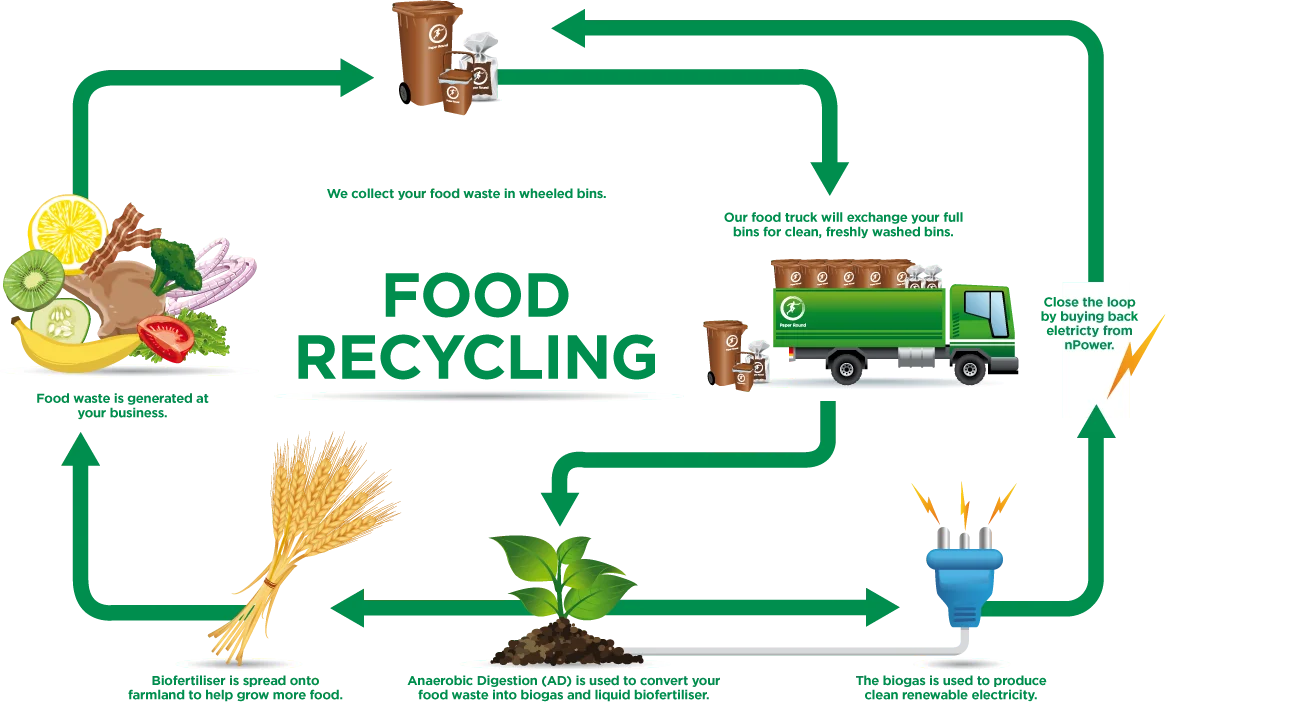
Turning food scraps into renewable energy
Food waste is a growing global problem. The waste sent to landfill releases biogases, including methane. Methane's a greenhouse gas that's 28 to 100 times more powerful than Carbon dioxide.
To put it into perspective, the United Nations estimates that 8–10% of global greenhouse gas emissions come from food waste.
There's "tremendous opportunity" for a biological process called anaerobic digestion.
[This] breaks down food wastes into biogas—a mixture of methane and Carbon dioxide—to generate renewable energy.
The idea is simple: capture the methane from decomposing food and burn it. Like burning other hydrocarbons, the chemical reaction releases heat (energy) and Carbon dioxide.
CO₂ produced by burning methane is absorbed by the next generation of crops during photosynthesis. This means additional CO₂ isn't being added to the atmosphere.
Recent research into the environmental sustainability of anaerobic digestion of household food waste found that 1 ton of food waste in landfill produces 193 kg CO₂-equivalents. On the flip side, producing renewable energy via anaerobic digestion offsets 39 kg CO₂-equivalents per ton of food waste.
Anaerobic digestion does more than produce biogas. It creates lactic acid as a natural by-product.
Lactic acid is used in cleaning products, pharmaceuticals, food and cosmetics. Producing this chemical in a Carbon neutral process can make biogas production more profitable.
Biorefinery processes are able to recycle this food waste to produce valuable industrial biochemicals, modern biomaterials, and biofuels that can displace those produced from fossil resources.
 English
English Arabic
Arabic


